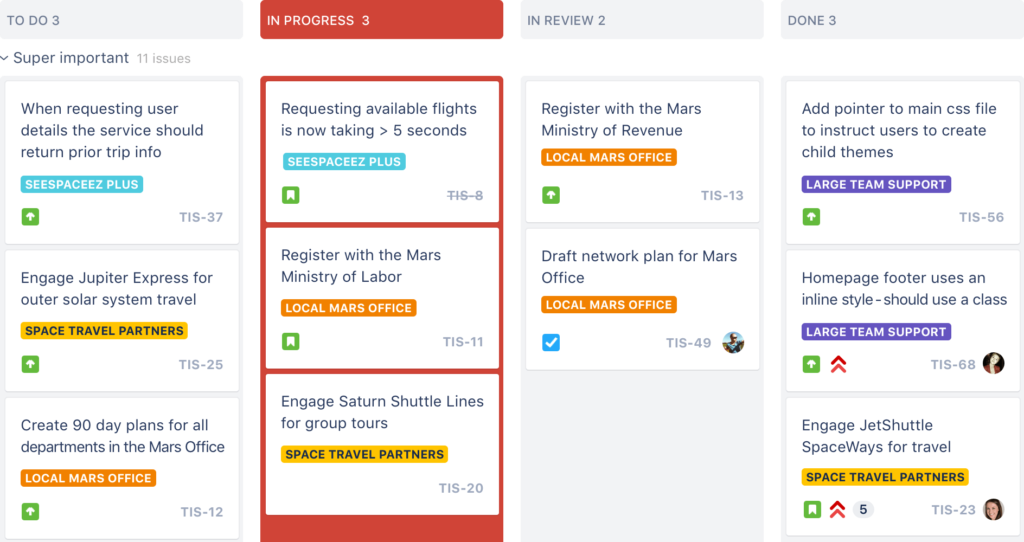Are you really doing Kanban? The Kanban litmus test

Below is the original article that was written by David J Anderson back in July 2014 with the idea for the Kanban Litmus Test, which is also explained in Essential Kanban Condensed (available as a free download). The Litmus Test was created as a response to the false summit plateau problem of, ¨we´re already doing Kanban, and it helped us, but it wasn´t enough.¨ The Litmus Test is designed to flush out whether or not people have really implemented sufficient Kanban practices for it to have a sufficient impact and get the evolutionary change engine rolling.
These days we are more likely to introduce you to the Kanban Maturity Model to understand Organizational Maturity and implement appropriate Kanban practices at the different levels of maturity. That said I’m sure people are still asking that same question David identified many years ago, if not for themselves then maybe to evaluate if others have managed to implemented Kanban or not.

With more people using online project management tools like Monday, Asana, Jira, and others with “Kanban” views or Kanban features, the question is this. “If I use a Kanban board or one of these tools am I then doing Kanban?” David answers this through his article and the Kanban litmus test.
If you would like to know more about the Kanban Method or take training from David or any of our other trainers then please have a look at our training pages or get in contact for advice on which one of our training courses would suit you best. We can also recommend the tools that can help you with your Kanban Implementation.
David J Anderson, July 2014
Over the years, there has been a commonly recurring question, “Are we doing Kanban or not?” I’ve always answered that the answer isn’t based on practice adoption but is rather a question of intent: do we have the intent to start where we are, and improve our processes in an evolutionary fashion, using a kanban system, and visual management techniques, as a means of catalyzing change?¨
“Are we using a kanban system or not?”
There is, of course a simpler question, “Are we using a kanban system or not?” At first blush this seems a pretty simple question to answer. We can look to see if you have mapped a workflow and implemented WIP limits across each activity in that workflow to create a pull system. If you have done this then it appears you are using a kanban system, and if not then you are not. The condition of intending to pursue evolutionary improvement of service delivery using the Kanban Method but where you haven’t yet implemented a proper kanban pull system across your service delivery workflows, was previously labeled as “Proto-Kanban” but is now recognized as Kanban Maturity Levels 0 through 2.
So it looks like we have this all under control. We understand whether a kanban system is in use based on observing WIP limits, and we understand whether the Kanban Method is in use based on intent. One can happen without the other and vice-versa, though we observe that they tend to go together.
The problem is that I often find people kidding themselves about whether they have truly deployed a kanban system. If a kanban is truly present then work is pulled into the workflow when there is capacity to do so. By implication, all upstream work is still optional and commitment is deferred. A full kanban system implementation creates a real options implementation – the two are inseparable. So to help people overcome the illusion of “doing Kanban” I’ve created the Kanban Litmus Test. This test is designed to be simple and gets to the real issue of implementing a deferred commitment pull system (using kanban). If you can’t answer “yes” to at least one and ideally all three of these questions then you have not properly implemented a kanban system and at best you have some shallow internally facing implementation or proto-kanban.
In the video below Andy Carmichael, who co-wrote the Essential Kanban Condensed guide with David Anderson, explains the Kanban Change Management Principles and the Service Delivery Principles as well as what makes a Kanban System. You may want to view this video to get an understanding of the Kanban Method with regards to these areas as they are the foundations of the Kanban Method authored by David Anderson over 10 years ago in his book Kanban: Successful Evolutionary Change for Your Technology Business
The Kaban Litmus Test
1. Has The Customer Interface Changed?
Has the way you interact with customers for the work changed? Has the planning and prioritization process changed? Or as we prefer to say with Kanban, have you adopted new approaches to scheduling and selection? If not, if you haven’t had to negotiate changes in customer behavior with respect to selection of work, then you are almost certainly not doing Kanban.
2. Has The Customer Contract Changed?
Has the way you make commitments to your customers changed? Have you adopted a service level agreement or set a service level expectation based on a probabilistic understanding of kanban system lead time? Are you using simulation based on statistical analysis of historical data make forecasts and set customer expectations for deliveries of batches of work? If not, then you almost certainly are not doing Kanban.
3. Has Your Service Delivery Business Model Changed?
Have you introduced classes of service based on an understanding of business risks in individual work items? Have you allocated capacity in the system to hedge risks from different sources of demand and different types of work? Are you using qualitative understanding of opportunity cost of delay to facilitate selection decisions and inspire queuing discipline policies for classes of service? Have you aggregated several services together in order to increase system liquidity and enable “haijunka” style balancing of risks and variability? Are you understanding clusters of customer expectations and probing with new classes of service? If not then you are probably leaving a lot of potential value on the table and your Kanban implementation could be a lot deeper and provide a lot more opportunity for your business.
4. Have managers changed their behavior?
This fourth question should be an obvious reflection of Kanban as a management method and the impact of a deferred commitment pull system on the organization. If managers haven’t changed their behavior since the introduction of pull then it is unlikely it will work. In fact, it is unlikely that it is truly a pull system at all. Many forms of proto-Kanban such as aggregated Team Kanban, or purely local implementations such as Team Kanban with simple 3 column boards showing, To-Do | Doing | Done, are actually push systems where some relief from overburdening is achieved with a per person WIP limit to reduce multitasking. In instances such as these, managers will not have changed their behavior. Typical, Team Kanban implementations, which are in effect just glorified Personal Kanban implementations, will not pass any of the questions from the Kanban Litmus Test. The new fourth question simply underscores this. If managers haven’t changed their behavior, it is unlikely you have a true pull system, and you are most certainly not doing Kanban.
What to do if you are not yet using the Kanban Method
Perhaps the simplest test we’ve ever had to determine whether you’ve truly implemented Kanban – The Kanban Litmus Test: Has the customer interface changed? Has the customer contract changed? Has your service delivery business model changed? Have managers changed their behavior? If you can’t answer “yes” to the first and ideally all four questions then you’ve got a lot more to do. However, the good news is that there is a lot more value to be squeezed from your Kanban implementation if you embrace the power of pull systems, deferred commitment, and real option theory.
To deepen your Kanban implementations consider taking training in STATIK – the System Thinking Approach to Implementing Kanban – as part of a Kanban University Foundation Level training with the David J Anderson School of Management, or consider exploring the challenges of limiting WIP and implementing a deferred commitment pull system, through our more advanced training classes.





